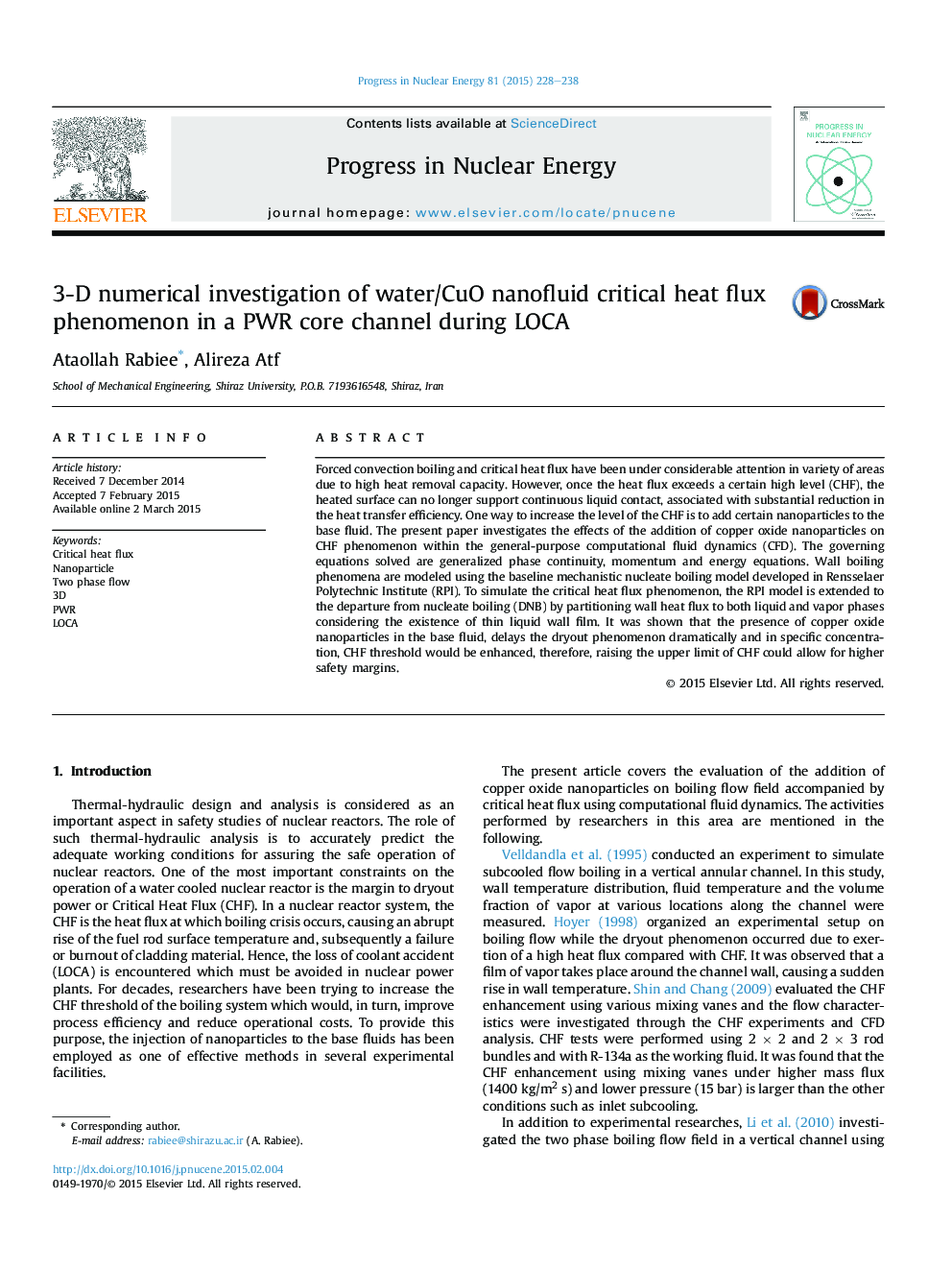| Article ID | Journal | Published Year | Pages | File Type |
|---|---|---|---|---|
| 8085446 | Progress in Nuclear Energy | 2015 | 11 Pages |
Abstract
Forced convection boiling and critical heat flux have been under considerable attention in variety of areas due to high heat removal capacity. However, once the heat flux exceeds a certain high level (CHF), the heated surface can no longer support continuous liquid contact, associated with substantial reduction in the heat transfer efficiency. One way to increase the level of the CHF is to add certain nanoparticles to the base fluid. The present paper investigates the effects of the addition of copper oxide nanoparticles on CHF phenomenon within the general-purpose computational fluid dynamics (CFD). The governing equations solved are generalized phase continuity, momentum and energy equations. Wall boiling phenomena are modeled using the baseline mechanistic nucleate boiling model developed in Rensselaer Polytechnic Institute (RPI). To simulate the critical heat flux phenomenon, the RPI model is extended to the departure from nucleate boiling (DNB) by partitioning wall heat flux to both liquid and vapor phases considering the existence of thin liquid wall film. It was shown that the presence of copper oxide nanoparticles in the base fluid, delays the dryout phenomenon dramatically and in specific concentration, CHF threshold would be enhanced, therefore, raising the upper limit of CHF could allow for higher safety margins.
Related Topics
Physical Sciences and Engineering
Energy
Energy Engineering and Power Technology
Authors
Ataollah Rabiee, Alireza Atf,
